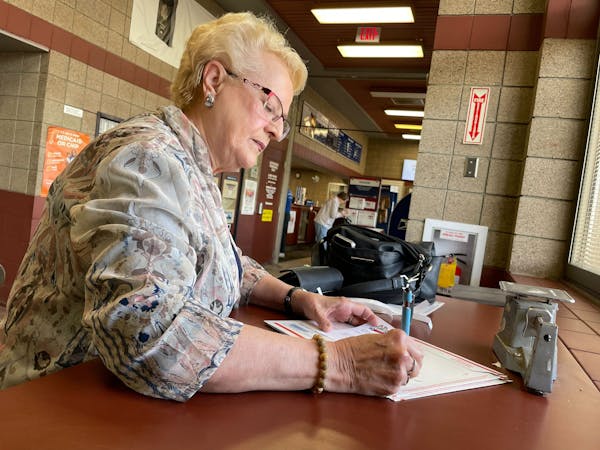Opinion editor's note: Star Tribune Opinion publishes a mix of national and local commentaries online and in print each day. To contribute, click here.
•••
Earlier this year, Minnesota enacted legislation committing us to 100% carbon-free electricity by 2040, one of the most ambitious clean energy laws in the nation, cementing our position as a clean energy leader.
Our efforts were driven by the threats of climate change and air pollution, and the opportunity to grow good-paying clean energy jobs with more affordable renewable energy. Now, it's time to get to work and make this law a reality — and we're going to need a bigger grid.
Minnesota's clean energy transition is already underway, with low-cost, reliable renewable technologies like wind and solar providing 31% of Minnesota's electricity generation in 2022. But fulfilling the potential of 100% carbon-free electricity hinges on having a power grid — and a regional grid operator — that can keep up.
We have the right policies in place to achieve our clean energy goals, but our grid infrastructure is sorely lacking.
The Midcontinent Independent System Operator (MISO), hosting a meeting in Minnesota this week, is the grid manager for 45 million people across 15 U.S. states, including Minnesota. They are responsible for planning and operating a modern electricity grid capable of fulfilling Minnesota's clean energy transition while lowering costs and improving reliability. But so far, our out-of-date transmission network isn't up for the task ahead. That needs to change, fast.
To understand the extent of the problem, consider that it can take years to bring new renewable power — and new power lines — online. In 2022, 96% of all electric grid interconnection requests in Minnesota were from wind, solar, storage or hybrid projects (storage plus wind or solar) totaling nearly nine gigawatts (GW) of potential new sources of clean power — enough to power nearly 7 million homes. MISO is working to reduce wait times for grid interconnection, but that is not enough. There simply are not enough transmission lines to accommodate the acceleration of clean energy growth.
We need more high-tech, high-capacity transmission lines to incorporate more cheap, clean energy and help Minnesota meet its climate targets, while enhancing reliability during extreme weather events when electricity demand often peaks.
MISO has taken important first steps but must double down on efforts to build out a modern transmission network. The grid operator approved a historic investment in transmission known as Tranche 1 last summer that will deliver over $37 billion in benefits across the Midwest — the first of a planned four-stage investment. These transmission lines will support more than 13 GW of new wind and solar resources and create more than 56,000 jobs in MISO "Zone 1."
The bad news is that Tranche 1 targets long overdue grid fixes and reliability concerns and was planned before Gov. Tim Walz signed the 100% legislation — and after a decade of inaction. On a business-as-usual timeline these power lines won't be operating until 2030, and even these investments won't be enough to get us where we need to go. Minnesota urgently needs additional transmission capacity yesterday, and our grid operator is still years behind.
We cannot afford to wait until later this decade to make needed investments to help Minnesota achieve our 100% carbon-free electricity standard by 2040. Falling behind on building out a clean and reliable grid would risk undermining our progress and leaving Minnesotans stuck with a fossil-fueled power system that is more polluting, more expensive and less reliable.
MISO must catch up with Minnesota's leadership and facilitate the build-out of transmission lines at a pace that ensures all Minnesotans can enjoy the benefits of this historic transformation. We need a creative, solutions-oriented partner on the road to 100% carbon-free power that works closely with utilities, regulators and stakeholders to meet this moment.
Achieving Minnesota's renewable electricity and carbon-free electricity standards will drive economic growth and create jobs, improve air quality and health, lower energy prices and enhance grid reliability. We can't get there without a regional grid operator that is able to meet the level of ambition and leadership that Minnesotans are demonstrating.
Jamie Long, DFL-Minneapolis, is majority leader of the Minnesota House.
For Mother's Day, I don't want brunch. We need a cease-fire.



